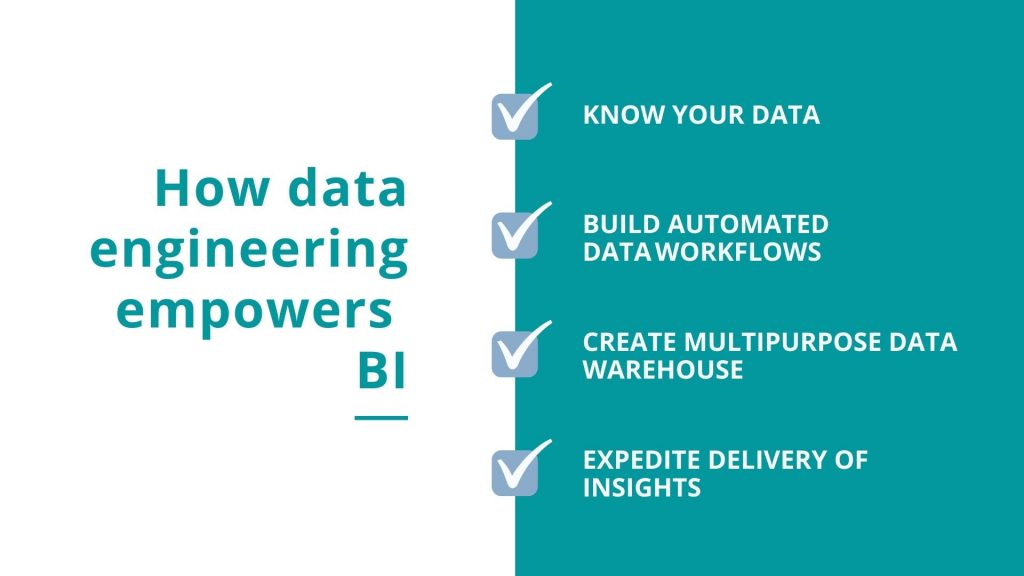
Organizations today amass volumes of data in a variety of ways. Data is captured and stored in different formats and structures dynamically, be it excel files to complex data architectures. The organizations which have now amassed this data over time, need to analyze it together. The first step of this process is to have a mechanism to find and transform the data and make it analytics-ready. Data engineering helps them to do that by making data uniform and usable as a single source of truth; data engineering supports the performance and outcomes of business intelligence. In this article, we will look at how data engineering is making business intelligence and analytics more powerful, real-time, and user-friendly.

Know your data
Organizations struggle to get full visibility into how much data they have, the place where it is located and the format in which it has been gathered; as in most cases the departments and processes are siloed. The stepping stone towards business intelligence is knowing your data. Data engineering enables organizations to connect the dots, discover their data from various applications, processes, locations and people. Not just that, it also enables businesses to filter the data that is crucial for analytics to get the most valuable insights. It enables them to collate, sort and categorize their data, both structured and unstructured for further use and interpretation.
Build Automated Data Workflows
Organizations are enabled by data engineering by allowing them to create lean and scalable data architectures for their business intelligence initiatives. Organizations can bring more value to all data-driven processes and build smart data pipelines. Data workflows can be automated to ensure seamless integration with a multipurpose data warehouse. This ensures that the most relevant, current and accurate data is available for analytics.
Create Multipurpose Data Warehouse
Once the data workflows are set, the data is collated into data pools and is pushed to OLAP systems or multipurpose enterprise warehouses. OLAP pre-aggregate data and add speed to data analytics. This helps derive insights across multiple dimensions and measures, making it easier to spot patterns and correlations in the now uniform data. This data is available to be extracted and consumed for reporting. Numerous actions can be performed on the data available in the data warehouse, without disturbing the existing transactional systems or operational processes flows as per the analytics need of the business.
Expedite Delivery of Insights
The whole BI process for an organization is expedited by data engineering. Data is processed at lightning-fast speed with automation and smart workflows, and is readily available in high volumes to run machine learning and data science algorithms. Enterprises can derive patterns from historical and real-time data and identify trends and draw deeper insights that are valuable for the business. They can generate actionable insights, create data stories, and transform daily activities with data-driven decision making.
Data engineering brings not only speed and agility to creation of robust data workflows, but also adds new data sources on the fly. It empowers all stakeholders with access to a rich variety of data and draw powerful insights. This lays the foundation of a successful, scalable business intelligence initiative for any enterprise.